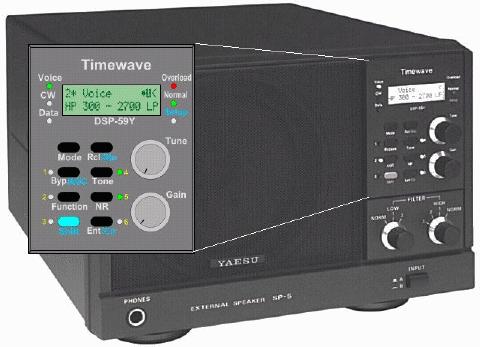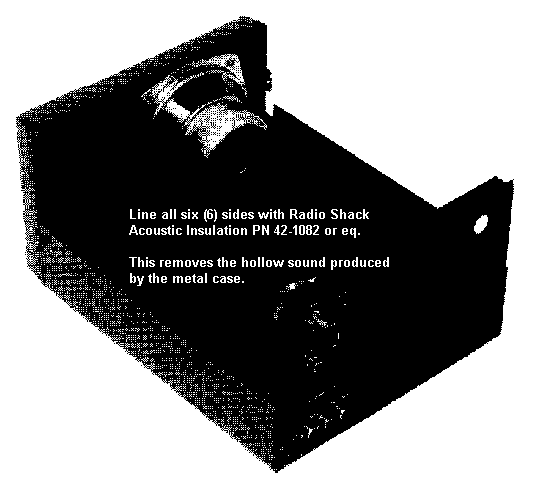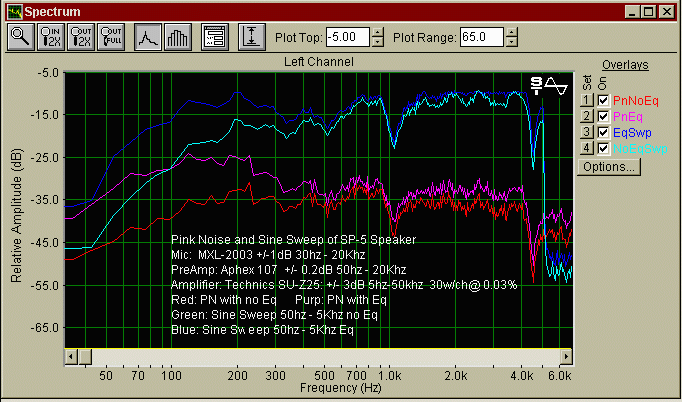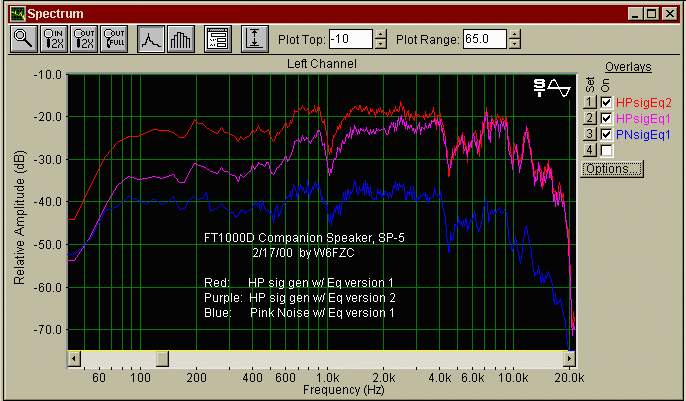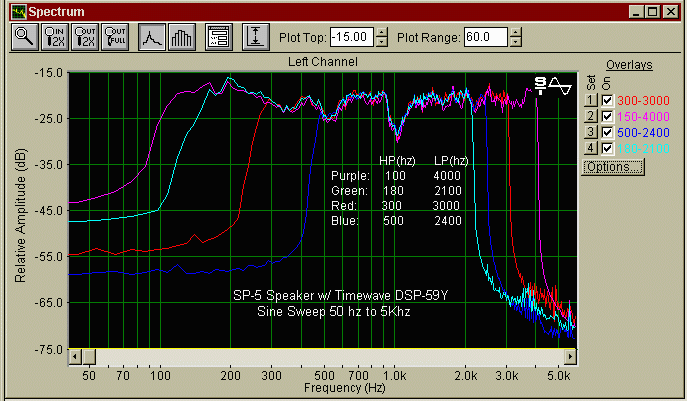|
K6JRF's Page formerly W6FZC FT1000D Speaker SP-5 and Timewave DSP-59Y |
|
This report details techniques for obtaining wide response audio from the FT1000D
companion speaker, SP-5 including response curves from the Timewave DSP-59Y unit. Also a method of bandwidth
verification using sweeps of pink noise and sinewaves is explained including full band audio spectrum sweep.
|
|
The companion speaker for the FT1000 is the SP-5. I recently acquired one for the purpose of installing the Timewave DSP
unit, DSP-59Y.
The picture shows how it mounts into the upper portion of the speaker cabinet and provides superior audio processing
including automatic multi-tone notch function! The link gives all of the details.
Analysis: The first thing that was done was to line the insides of the case with acoustic insulation (Radio Shack PN 42-1082) to deaden the boomy, hollow sound produced by the metal cabinet. This worked quite nicely.
The equipment used was: Mic, Marshall MXL2003 condenser mic; Preamp, Aphex 107 Tubessence; PN/SS source, Sony MD MZ-R55; Power Amplifier, Technics SU-Z25 (30W/chan @ 0.03% dist); Charts, SpectraPlus running on my laptop SENS-810. Referring to picture, the following chart lines are explained: The RED line is the PN sweep without equalization. Note the major speaker resonance's at apx 1Khz and 4.5Khz. The PURPLE line is the PN sweep with equalization from the Technics amplifier. The LF boost is apx +10dB at 100hz and HF boost is +5dB at 6Khz. Note that overall slope to the curve forms an apx +8dB boost at low frequencies (100hz) when compared to the high frequencies (4.5Khz). This response curve emulates most AM "talk radio" broadcast stations such as KFMB and KOGO in San Diego.
You can set the equalization any place that gives the sound most pleasing to your ears. I chose to emulate a "commercial" broadcast station but you could set it so that it's flat. Note that stock SSB audio from non WB audio radio (300 - 2.6Khz) sounds very natural since the area from 300hz to 4Khz exhibits a flat frequency response (except for the speaker resonances). Full Band Sweep: Referring to picture, the sweep was increased to encompass the full audio band; 50hz to 20Khz. Note the 'problem' with using pink noise "interpretation" appears! Remember that a 'FLAT' sweep using pn appears as a drop of 3dB in amplitude. As shown in BLUE, the pn sweep is basically flat. Thus the response is not flat. So a conventional sine sweep was performed using my HP3310A signal generator. Equalization was provided from the Technics power amplifier (SU-Z25) and is labeled EQ1 and EQ2. EQ2 is closer to a flat response than is EQ1 and is presently used. The slight rise (about 3dB) at higher frequencies makes the audio a little lighter and gives less ear fatigue.
The Timewave DSP-59Y unit is currently being serviced by Great River Electronics. The unit is especially made for mounting into the SP-5/SP-6 speaker. It was installed this week and response curves run via Spectraplus (SP) to verify the accuracy and depth of stop-band attenuation. Referring to picture, the response for various high pass (HP) and low pass (LP) combinations are shown. Note that the HP stop-band attenuation increases in proportion to the frequency, 20db at 100hz to 35dB at 500hz. The LP stop-band attenuation is the same for all frequencies and is in excess of 45dB! The actual frequencies appear to be close (if not exact) to the programmed values. Note the speaker resonance at about 1Khz.
The techniques described here results in sonically pleasant audio from the FT1000 SP-5 or SP-6 companion speaker. The Timewave DSP-59Y is a great add-on for the FT1000D. The TONE feature completely eliminates single or multiple-tone carriers automatically! |
|
Send me
|
